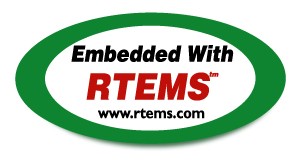


 RTEMS Intel i386 Applications Supplement
RTEMS Intel i386 Applications Supplement 



 RTEMS Intel i386 Applications Supplement
RTEMS Intel i386 Applications Supplement
RTEMS supports the i386 protected mode, flat memory model with paging disabled. In this mode, the i386 automatically converts every address from a logical to a physical address each time it is used. The i386 uses information provided in the segment registers and the Global Descriptor Table to convert these addresses. RTEMS assumes the existence of the following segments:
The i386 segment registers and associated selectors must be initialized when the initialize_executive directive is invoked. RTEMS treats the segment registers as system registers and does not modify or context switch them.
This i386 memory model supports a flat 32-bit address space with addresses ranging from 0x00000000 to 0xFFFFFFFF (4 gigabytes). Each address is represented by a 32-bit value and is byte addressable. The address may be used to reference a single byte, half-word (2-bytes), or word (4 bytes).
RTEMS does not require that logical addresses map directly to physical addresses, although it is desirable in many applications to do so. If logical and physical addresses are not the same, then an additional selector will be required so RTEMS can access the Interrupt Descriptor Table to install interrupt service routines. The selector number of this segment is provided to RTEMS in the CPU Dependent Information Table.
By not requiring that logical addresses map directly to physical addresses, the memory space of an RTEMS application can be separated from that of a ROM monitor. For example, on the Force Computers CPU386, the ROM monitor loads application programs into a logical address space where logical address 0x00000000 corresponds to physical address 0x0002000. On this board, RTEMS and the application use virtual addresses which do not map to physical addresses.
RTEMS assumes that the DS and ES registers contain the selector for the single data segment when a directive is invoked. This assumption is especially important when developing interrupt service routines.



 RTEMS Intel i386 Applications Supplement
RTEMS Intel i386 Applications Supplement
Copyright © 1988-2004 OAR Corporation